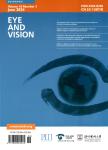Automated diagnosis and staging of Fuchs’endothelial cell corneal dystrophy using deep learning
作者机构:Bascom Palmer Eye InstituteMiller School of MedicineUniversity of MiamiMiamiFlorida 33136USA Department of OphthalmologyFaculty of MedicineBenha UniversityBenhaEgypt Electrical and Computer EngineeringUniversity of MiamiCoral GablesFloridaUSA Net Eye Medical CenterGaziantepTurkey Biomedical EngineeringUniversity of MiamiCoral GablesFloridaUSA
出 版 物:《Eye and Vision》 (眼视光学杂志(英文))
年 卷 期:2020年第7卷第1期
页 面:423-433页
核心收录:
学科分类:1002[医学-临床医学] 100212[医学-眼科学] 10[医学]
基 金:This study was supported by a NEI K23 award(K23EY026118) NEI core center grant to the University of Miami(P30 EY014801) Research to Prevent Blindness(RPB).The funding organization had no role in the design or conduct of this research
主 题:Optical coherence tomography Descemet’s membrane Corneal endothelium Fuchs endothelial dystrophy
摘 要:Background:To describe the diagnostic performance of a deep learning algorithm in discriminating early-stage Fuchs’endothelial corneal dystrophy(FECD)without clinically evident corneal edema from healthy and late-stage FECD eyes using high-definition optical coherence tomography(HD-OCT).Methods:In this observational case-control study,104 eyes(53 FECD eyes and 51 healthy controls)received HDOCT imaging(Envisu R2210,Bioptigen,Buffalo Grove,IL,USA)using a 6 mm radial scan pattern centered on the corneal *** was clinically categorized into early(without corneal edema)and late-stage(with corneal edema).A total of 18,720 anterior segment optical coherence tomography(AS-OCT)images(9180 healthy;5400 early-stage FECD;4140 late-stage FECD)of 104 eyes(81 patients)were used to develop and validate a deep learning classification network to differentiate early-stage FECD eyes from healthy eyes and those with clinical *** 5-fold cross-validation on the dataset containing 11,340 OCT images(63 eyes),the network was trained with 80%of these images(3420 healthy;3060 early-stage FECD;2700 late-stage FECD),then tested with 20%(720 healthy;720 early-stage FECD;720 late-stage FECD).Thereafter,a final model was trained with the entire dataset consisting the 11,340 images and validated with a remaining 7380 images of unseen AS-OCT scans of 41 eyes(5040 healthy;1620 early-stage FECD 720 late-stage FECD).Visualization of learned features was done,and area under curve(AUC),specificity,and sensitivity of the prediction outputs for healthy,early and late-stage FECD were ***:The final model achieved an AUC of 0.997±0.005 with 91%sensitivity and 97%specificity in detecting early-FECD;an AUC of 0.974±0.005 with a specificity of 92%and a sensitivity up to 100%in detecting late-stage FECD;and an AUC of 0.998±0.001 with a specificity 98%and a sensitivity of 99%in discriminating healthy corneas from all ***:Deep learning algorithm is an accurate autonomous nove



